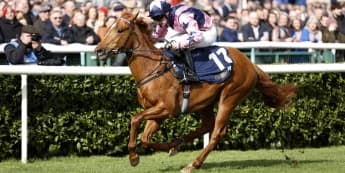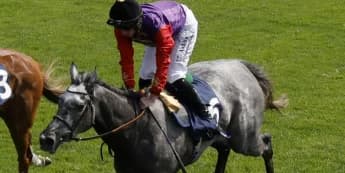In the wake of Alphonse Le Grande's controversial reinstatement as the 2024 Cesarewitch winner, horse racing faces critical questions about whip use regulations, fairness, and the integrity of the sport's governing framework.
This week, the horse racing community was shaken as Alphonse Le Grande was restored as the legitimate winner of the 2024 Cesarewitch, a ruling that has sparked troubling inquiries regarding the reliability of the sport’s disciplinary system. What appeared to be a minor technical issue – a disagreement over the number of whip strikes – has grown into a broader discussion, compelling industry professionals, jockeys, and officials to reconsider the regulations governing race-day behavior.
The initial legitimacy of Alphonse Le Grande's victory was questioned after apprentice jockey Jamie Powell was discovered to have surpassed the permitted limit of six whip strikes by four additional strikes. The typical penalty for such a violation is straightforward disqualification. This ruling would have resulted in a victory for Manxman, trained by Simon and Ed Crisford, who finished merely a nose behind.
The situation took an unexpected turn when trainer Cathy O’Leary, along with the Bet Small Win Big Syndicate and jockey Powell, challenged the ruling. Their case focused on how the term 'use' should be interpreted concerning whip strikes. Powell, who had received a 28-day ban, gained backing from a disciplinary panel of the British Horseracing Authority (BHA), which determined that one of his strikes was not intentional. The panel observed that Powell had accidentally hit Alphonse Le Grande while transferring the whip from one hand to another—a detail that, while subtle, carried significant weight.
As a result of this ruling, Powell's suspension was shortened to 20 days, and Alphonse Le Grande's victory in the Cesarewitch was rightfully restored. Nonetheless, the dispute continues. The Whip Review Committee and the disciplinary panel are currently in disagreement regarding the exact interpretation of whip usage, raising questions about the integrity of the rules themselves.
At the heart of this issue lies the seemingly straightforward term 'use.' In a sport characterized by precision, rapid decisions, and the delicate balance of power between the horse and the jockey, the distinction between unintentional and intentional use of the whip has become increasingly ambiguous. Previously, penalties were determined by concrete actions – such as a definitive count of strikes or evident misuse. Now, however, the very meaning of 'use' seems to be in a state of change, revealing a critical weakness in how the sport interprets and applies rules regarding whip-related offenses.
Currently, the ambiguity surrounding the definition of 'use' has resulted in a situation where even experienced professionals feel unsure about how to interpret the rules. Should jockeys only be held responsible for their actions when they are clearly intentional, or is there a space for subjective interpretation, particularly during intense competition? Furthermore, can horse racing maintain its integrity if the rules are subject to such debate and uncertainty?
Although the existing regulatory framework in horse racing has certainly progressed over the years, the circumstances surrounding Alphonse Le Grande’s Cesarewitch win reveal that even long-standing rules can have significant flaws. What initially seemed like a minor violation has prompted a broader discussion about the necessity for clarity and uniformity in the enforcement of such rules.
For horse racing to progress, it must take heed of these moments of ambiguity. A victory remains a victory, regardless of the surrounding disputes, and this situation should act as a springboard for a comprehensive reevaluation of the sport's regulatory framework. As the BHA proceeds with its review, the emphasis must be on ensuring that upcoming decisions embody not only the strict interpretation of the rules but also the essence of fair competition that has characterized the sport for centuries.







